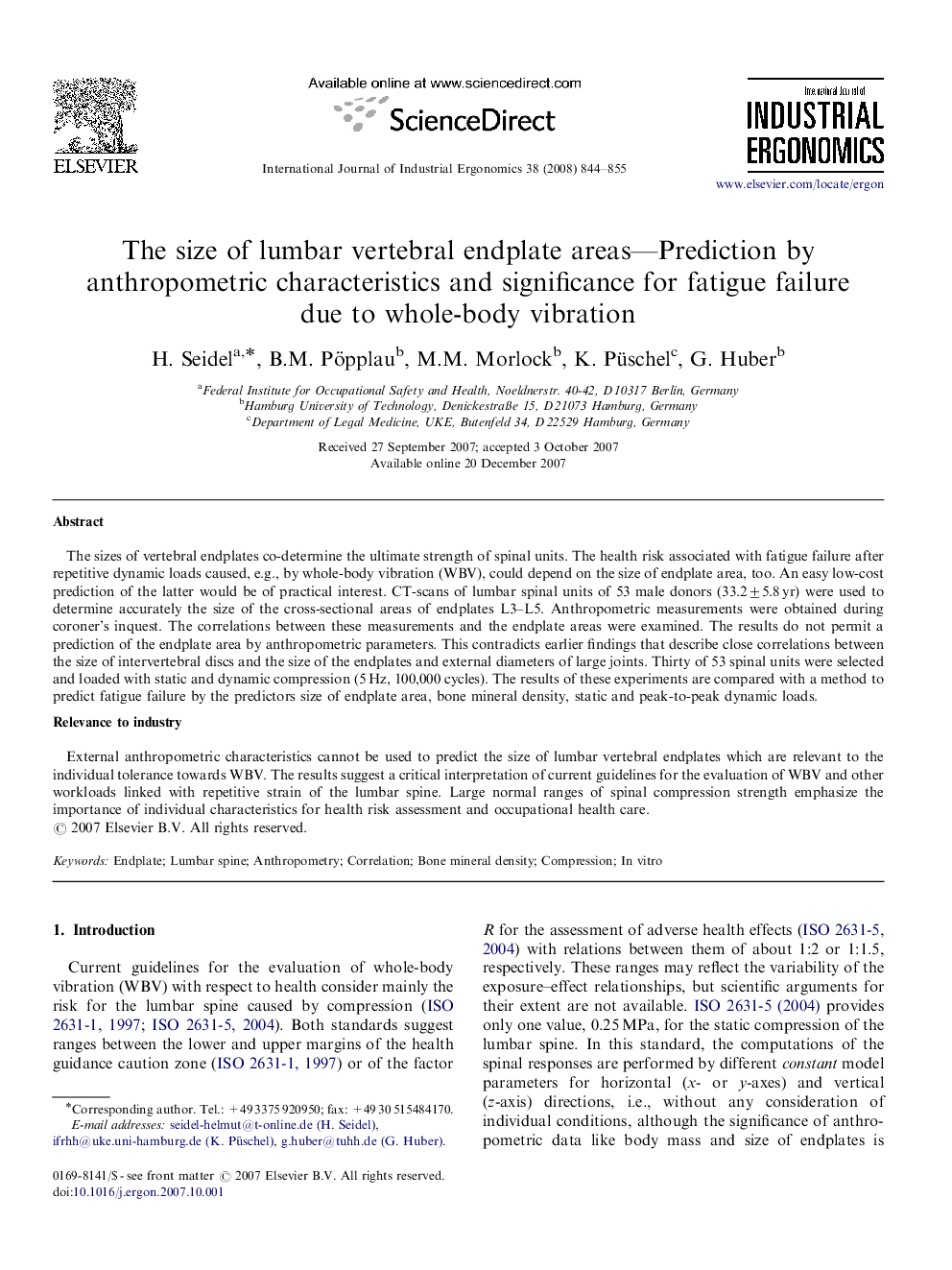| Article ID | Journal | Published Year | Pages | File Type |
|---|---|---|---|---|
| 1096634 | International Journal of Industrial Ergonomics | 2008 | 12 Pages |
The sizes of vertebral endplates co-determine the ultimate strength of spinal units. The health risk associated with fatigue failure after repetitive dynamic loads caused, e.g., by whole-body vibration (WBV), could depend on the size of endplate area, too. An easy low-cost prediction of the latter would be of practical interest. CT-scans of lumbar spinal units of 53 male donors (33.2±5.8 yr) were used to determine accurately the size of the cross-sectional areas of endplates L3–L5. Anthropometric measurements were obtained during coroner's inquest. The correlations between these measurements and the endplate areas were examined. The results do not permit a prediction of the endplate area by anthropometric parameters. This contradicts earlier findings that describe close correlations between the size of intervertebral discs and the size of the endplates and external diameters of large joints. Thirty of 53 spinal units were selected and loaded with static and dynamic compression (5 Hz, 100,000 cycles). The results of these experiments are compared with a method to predict fatigue failure by the predictors size of endplate area, bone mineral density, static and peak-to-peak dynamic loads.Relevance to industryExternal anthropometric characteristics cannot be used to predict the size of lumbar vertebral endplates which are relevant to the individual tolerance towards WBV. The results suggest a critical interpretation of current guidelines for the evaluation of WBV and other workloads linked with repetitive strain of the lumbar spine. Large normal ranges of spinal compression strength emphasize the importance of individual characteristics for health risk assessment and occupational health care.
